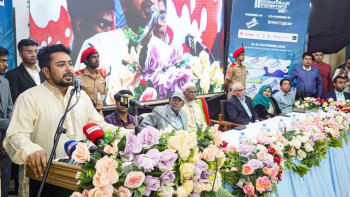Selfie Vs Portrait

Human civilization has already crossed milestones in the effort of capturing faces — paintings of the elites of the renaissance and photos of the world war martyrs and veterans. And in the more recent years, beauty is celebrated by portraits on the covers of Vogue and GQ. Now, in the current pin of our timeline, we are on the fourth year of the selfie epidemic.
You can say that this is also an era where portraits and selfies are in a raging battle of who is the 'beholder' in the quote — beauty is in the eye of the beholder. Is it the photographer who manipulates light to extenuate the beautiful features of a person, or the person who directs their own angles as they look at their front camera to take the perfect selfie?
Portrait photography is a technical art. The photographer decides what is beautiful enough to print and decorate in a gallery for an audience seeking art. Meanwhile, for selfies, the judgement of beauty is self-inflicted. We use mirrors to assess our beauty; we take selfies to let the Internet know we are beautiful.
The real difference in a selfie and a professional portrait is the story told. The selfie not only displays a picture of yourself, but it entails your own story. It is very direct and people see exactly what you want to portray within your frame; whereas a portrait is a story through lights and shadows onto a face, open to interpretation.

Master of portraits Sayeed Siddiqui elaborates, "The used perspective, the shadow elements, and the lights are used to create form, depth and drama to the subjects. Special techniques are applied to create softness to the skin. Every photography studio creates the same concept using soft boxes of different shapes and sizes to create portraits that are pleasing to the eye. Manipulating light to create contours can give adverse effects, an example being 'chiaroscuro' that brought in popularity of dark contrasts which is provoking to the eye, but an art form nevertheless. A good portrait taken in a studio or natural environment by adding or limiting light creates a mood. A well taken photo with moody lights, whether in monochrome or vivid colour transcends into fine art."
As a portrait photographer, his observation is that not much has changed from the early 20th century till today except maybe the tools. To him, all kinds of photographs are relevant and probably meaningful. He believes that the enormity of the selfie phenomena is because of how the internet works.
"Selfies are impulsive self-indulgence. It doesn't require prior planning or environment. I might also add it gained such popularity due to social media. It is like a continuous narration of one's mood and activities shared with friends or foes. It is like a news forum where everyone is a celebrity," Siddiqui concludes.
The selfie is not just a portrait. It is noticeably a manner of implying, "I did this, I am here, I have this or I like this," and sometimes "look at me!" and all sorts of possessive signs towards oneself and everything that occupies the space of the frame. When you feel good about yourself, or you want to show the current expression on your face with the most appropriate and catchy caption, you celebrate your moment; you create an occasion by taking a selfie.
A selfie is very personal. The selfie-version of yourself is the avatar you want to present to the world online. Your selfie version is the one you promote more aggressively when you are looking for a partner from the virtual platform.
When you give the liberty to everyone to take their own portraits, it is incomparable to the professional art. It is not a matter of creativity anymore, it is purely self-expression.
Credits for portraits
Photo: Sayeed Siddiqui
Models: Asif Azim, Shoumi
Credits for selfie
Photo: Shahrear Kabir Heemel
Models: Antora, Mysha, Arpita, Meghla


 For all latest news, follow The Daily Star's Google News channel.
For all latest news, follow The Daily Star's Google News channel. 



Comments